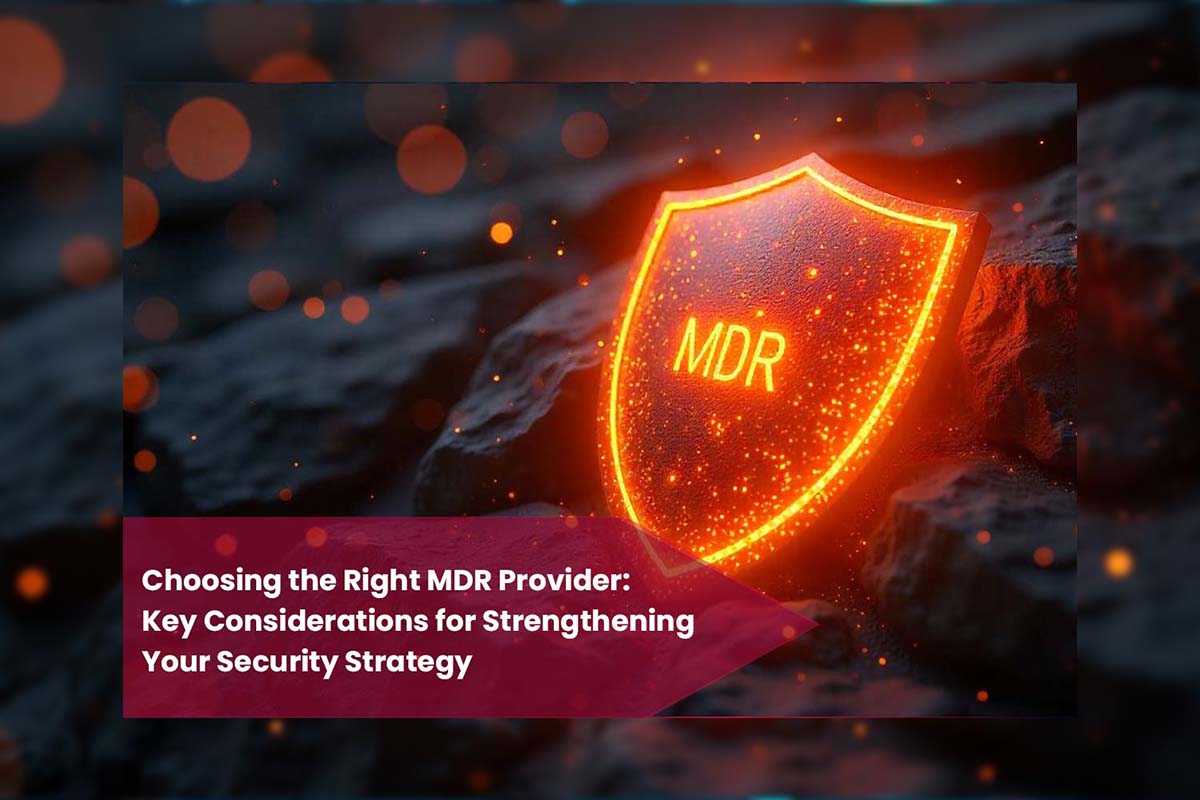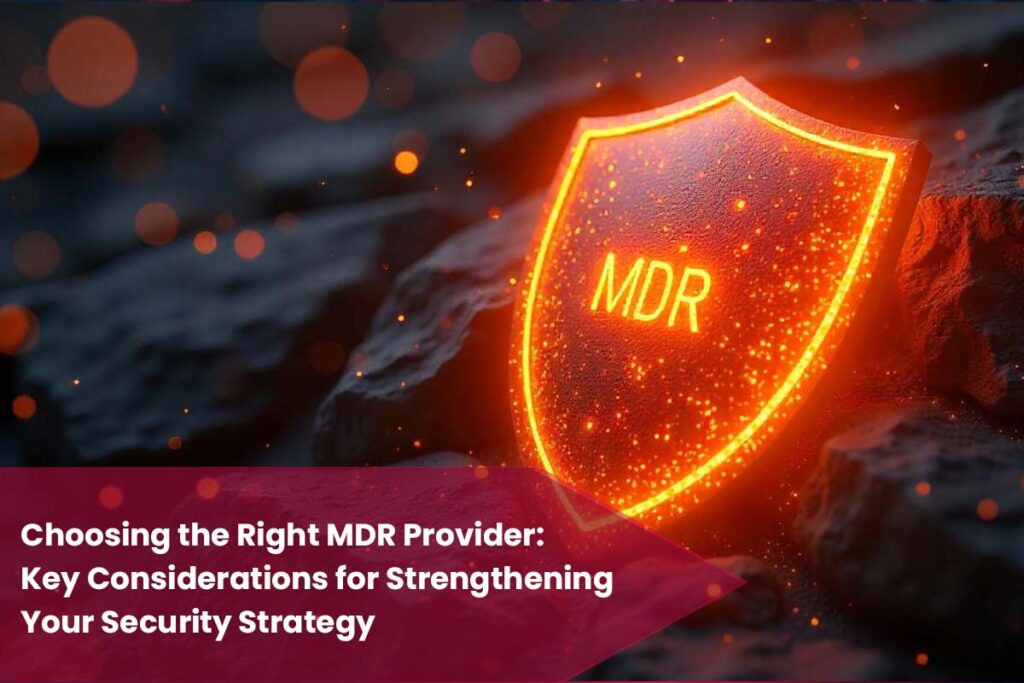





As cyberattacks become increasingly sophisticated, organisations must prioritise proactive security measures to protect their systems and sensitive information. Managed Detection and Response (MDR) has emerged as an essential solution for modern cybersecurity challenges, offering real-time monitoring, advanced threat detection, and rapid incident response.
In Australia, the growing frequency of cyberattacks has heightened the need for robust cybersecurity solutions. According to the Australian Cyber Security Centre (ACSC), there were over 76,000 cybercrime reports in the 2022–2023 financial year—a 13% increase compared to the previous year. These attacks disproportionately affected critical industries such as healthcare, finance, and energy, underlining the necessity for effective protection strategies.
Choosing the right MDR provider is critical for ensuring not only optimal defence against these threats but also compliance with Australian regulations, such as the Privacy Act and ISO 27001 standards. By partnering with an experienced and capable MDR provider, organisations can enhance their security posture and safeguard their operations in an increasingly volatile digital landscape.
Managed Detection and Response (MDR) providers deliver comprehensive cybersecurity services designed to protect organisations from advanced threats. Unlike traditional security solutions such as firewalls or antivirus software, which rely on static defence mechanisms, MDR employs dynamic, proactive measures to detect and respond to cyberattacks in real time.
MDR providers offer a range of critical services, including 24/7 monitoring, threat intelligence, and incident response. Through continuous monitoring, MDR services identify suspicious activities and potential breaches before they escalate. Threat intelligence, powered by artificial intelligence and behavioural analytics, allows providers to predict and mitigate emerging risks. When an incident occurs, MDR teams act swiftly to contain the threat, minimise damage, and restore normal operations.
The key distinction between MDR and traditional security tools lies in the level of sophistication and responsiveness. Traditional solutions focus on preventing known threats through signature-based detection and rule configurations. In contrast, MDR services adapt to evolving attack techniques, leveraging advanced analytics and expert oversight to detect anomalies that may bypass static defences.
Selecting the right Managed Detection and Response (MDR) provider is critical for strengthening an organisation’s cybersecurity strategy. Below are the essential factors businesses should consider to ensure a reliable and effective partnership:
The expertise of an MDR provider is paramount. Organisations should prioritise providers with recognised certifications, such as ISO 27001, which demonstrates adherence to international information security standards. Partnerships with reputable cybersecurity vendors and a proven track record of years in the industry further validate a provider’s credibility.
For Australian businesses, compliance with local standards is equally important. Providers familiar with regulations such as the Privacy Act and industry-specific frameworks (e.g., PCI DSS for payment security) can offer tailored solutions to meet compliance requirements. Local expertise ensures not only adherence to regulations but also the ability to respond effectively to region-specific threats.
A provider with extensive experience in managing advanced threats and mitigating risks across diverse industries will provide the assurance organisations need to safeguard sensitive data.
Cyber threats do not adhere to business hours, making continuous monitoring essential for effective protection. An MDR provider offering 24/7 monitoring ensures potential threats are detected and addressed in real time, minimising the window of opportunity for attackers.
For instance, an Australian healthcare organisation recently benefitted from MDR’s round-the-clock monitoring when unusual activity was detected on its network during the early hours. The provider’s analysts swiftly isolated the threat, preventing a ransomware attack that could have disrupted critical services.
By combining advanced technologies with human oversight, 24/7 MDR services enable rapid responses to emerging threats. This capability is particularly vital for industries where downtime or data breaches can have significant operational and reputational consequences.
No two businesses have identical cybersecurity needs, making scalability and customisation vital considerations when selecting an MDR provider. Whether a small business with limited IT resources or a large enterprise with complex infrastructure, organisations require solutions that adapt to their size and operational demands.
Tailored MDR services can address unique challenges across industries, such as protecting intellectual property for manufacturing firms or ensuring compliance for financial institutions. Providers that offer scalable solutions can also support businesses as they grow, ensuring continued protection without the need for a complete overhaul of security measures.
Scalability not only accommodates immediate needs but also future-proofs an organisation’s cybersecurity posture, allowing it to adapt to evolving threats and operational changes.
Transparent pricing and clearly defined Service Level Agreements (SLAs) are crucial for maintaining trust and ensuring an effective partnership with an MDR provider. SLAs should outline the provider’s responsibilities, response times, and the scope of services in detail, leaving no room for ambiguity.
Hidden costs or vague service commitments can undermine the effectiveness of MDR solutions. For example, some providers may charge extra for incident response or exclude specific services, leaving businesses unprotected during critical moments.
Organisations should seek providers that offer predictable pricing models, ensuring no surprise costs arise during a cyber incident. This clarity enables businesses to budget effectively and maintain confidence in the value delivered by their MDR solution.
| Feature | Provider A | Provider B | Provider C |
|---|---|---|---|
| ISO 27001 Certified | Yes | Yes | No |
| 24/7 Monitoring | Yes | Yes | Limited |
| Customisable Solutions | Yes | Limited | Yes |
| Transparent Pricing | Yes | No | Yes |
Compliance with Australian regulatory standards is an essential consideration when selecting a Managed Detection and Response (MDR) provider. Organisations operating within Australia must adhere to stringent regulations designed to protect sensitive information and mitigate cybersecurity risks. MDR providers play a crucial role in ensuring these requirements are met.
Key standards include ISO 27001, an internationally recognised framework for information security management, which mandates the implementation of robust controls to safeguard data. Additionally, organisations handling payment card information must comply with the Payment Card Industry Data Security Standard (PCI DSS) to prevent fraud and secure financial transactions. Compliance with the Australian Privacy Act is also critical, as it governs the handling of personal information and imposes obligations to protect the privacy of individuals.
Failure to comply with these standards can result in severe consequences, including substantial fines, legal liabilities, and reputational damage. For example, a data breach linked to non-compliance with the Privacy Act can trigger investigations by the Office of the Australian Information Commissioner (OAIC), leading to penalties and loss of customer trust.
An MDR provider familiar with these regulatory frameworks can ensure an organisation’s security measures align with legal obligations, reducing compliance risks and bolstering stakeholder confidence. By partnering with a compliant provider, businesses can focus on their operations, knowing their data protection practices meet Australian legal standards.
Choosing the right Managed Detection and Response (MDR) provider requires careful evaluation to ensure their services align with your organisation’s needs. Taking a systematic approach can help businesses make informed decisions.
One effective step is to review case studies or client testimonials to assess the provider’s track record in managing real-world threats. This helps identify providers with experience in your specific industry or operational context.
Another important consideration is conducting a demo or proof-of-concept trial. This allows businesses to evaluate the provider’s platform capabilities, response processes, and integration with existing infrastructure. Such trials often reveal practical strengths and weaknesses not evident in marketing materials.
It is also essential to ask about response times and escalation procedures. A reliable provider should have defined protocols for handling incidents, including rapid containment and regular updates during critical events.
The value of customer support teams based in Australia cannot be overstated. Local expertise ensures a faster response to time-sensitive issues and better understanding of compliance requirements under Australian regulatory frameworks.
By following these practical steps, organisations can select a provider that enhances their cybersecurity posture while aligning with operational and compliance needs.
Choosing the right Managed Detection and Response (MDR) provider is a critical step in building a resilient cybersecurity strategy. With the increasing complexity of cyber threats, organisations must partner with providers that deliver advanced protection, tailored solutions, and compliance with Australian regulations. Carefully evaluating potential providers based on expertise, scalability, and transparency ensures an informed decision that aligns with your business needs.
Begin by assessing your organisation’s unique security challenges and operational requirements. Research trusted MDR providers with proven track records and certifications that reflect their commitment to excellence. Taking these steps will not only enhance your cybersecurity posture but also strengthen customer trust and regulatory compliance.
Take the first step towards safeguarding your business today. Explore Fort 1’s Managed Detection and Response services and discover how we can help protect your organisation from evolving cyber threats.

Fort1 provides comprehensive cybersecurity solutions tailored to protect your business from evolving digital threats. With expertise in penetration testing, dark web monitoring, and managed detection services, we empower organisations to stay secure and resilient in the face of modern cyber challenges.
Copyright @2024 Fort1. All Rights Reserved by Fort1.